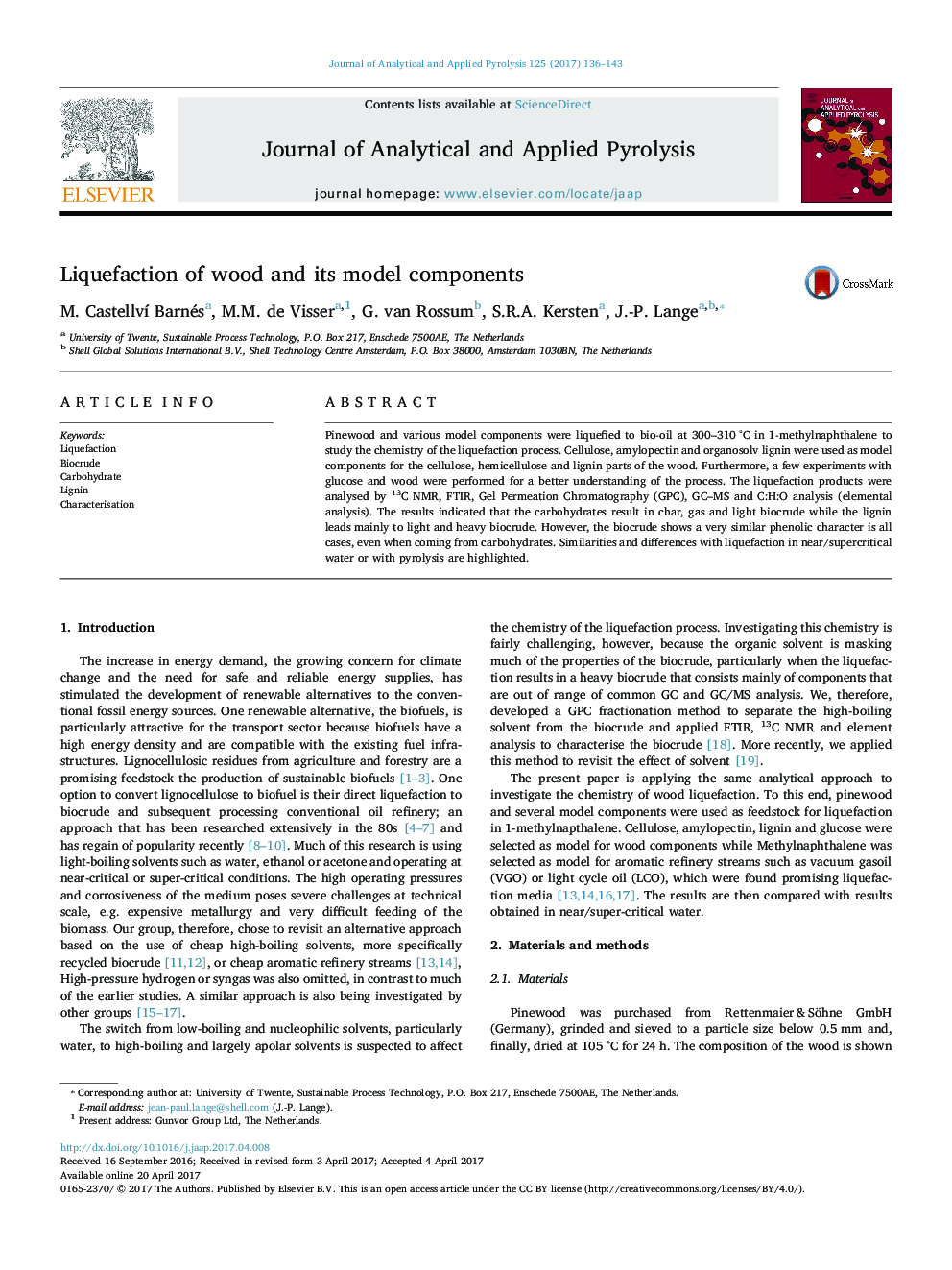| کد مقاله | کد نشریه | سال انتشار | مقاله انگلیسی | نسخه تمام متن |
|---|---|---|---|---|
| 5134486 | 1492952 | 2017 | 8 صفحه PDF | دانلود رایگان |

- Char is formed by condensation of accessible carbohydrates, particularly when present at high concentration. The char is not a degradation product of the biocrude.
- The heavy fraction of the biocrude is mainly coming from the lignin, likely through incomplete depolymerisation.
- Despites their chemically differences, carbohydrates and lignin produce a similar phenolic-type biocrude.
Pinewood and various model components were liquefied to bio-oil at 300-310 °C in 1-methylnaphthalene to study the chemistry of the liquefaction process. Cellulose, amylopectin and organosolv lignin were used as model components for the cellulose, hemicellulose and lignin parts of the wood. Furthermore, a few experiments with glucose and wood were performed for a better understanding of the process. The liquefaction products were analysed by 13C NMR, FTIR, Gel Permeation Chromatography (GPC), GC-MS and C:H:O analysis (elemental analysis). The results indicated that the carbohydrates result in char, gas and light biocrude while the lignin leads mainly to light and heavy biocrude. However, the biocrude shows a very similar phenolic character is all cases, even when coming from carbohydrates. Similarities and differences with liquefaction in near/supercritical water or with pyrolysis are highlighted.
59
Journal: Journal of Analytical and Applied Pyrolysis - Volume 125, May 2017, Pages 136-143